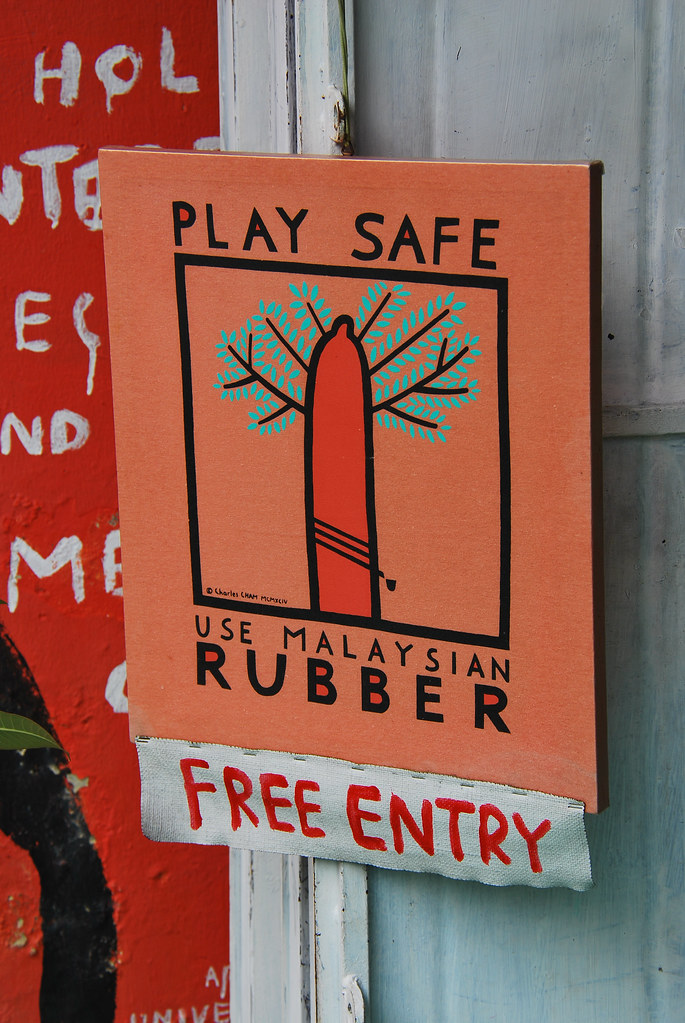Rubber
Iquitos in Peru was a big fish during the rubber boom. The city was flush with cash. The main square has a house designed by Gustav Eiffel. It all came unstuck though. Henry Wickham smuggled out the rubber plant. It was taken to British Malaya. This allowed the English to control the rubber industry. Peru and Brazil’s rubber barons moved on and the local economies stagnated.

It was in Malacca, now part of the modern Malaysia that I saw a sign that read: “Play Safe. Use Malaysian Rubber”. Aside from the magnificent advice on using contraceptives, I got the feeling that the Malaysian rubber industry is losing out to one of its cheaper neighbours. I looked it up. Malaysia is now number 4. Thailand is the biggest producer and Vietnam has recently passed it to be number 3.
Did you know that the Vietnam War was, to an extent, over rubber. The loss of Vietnam and potentially Indochina to the communists could jeopardise “the principal world source of natural rubber and tin”. In the Pentagon Papers it says that Malaysia and Indonesia were the primary producers. So I guess in the last 40 years Malaysia’s rubber industry has been losing out and that helps explain the sign.
It seems the history of rubber is people losing out. The first people to lose out were not the Peruvians and Brazilians but the local Amazon Indians who were forced in to slavery to run the plantations. Tens of thousands were tortured and butchered.
Buy synthetic rubber!? Then it's the history of rubber vs. the history of petroleum.